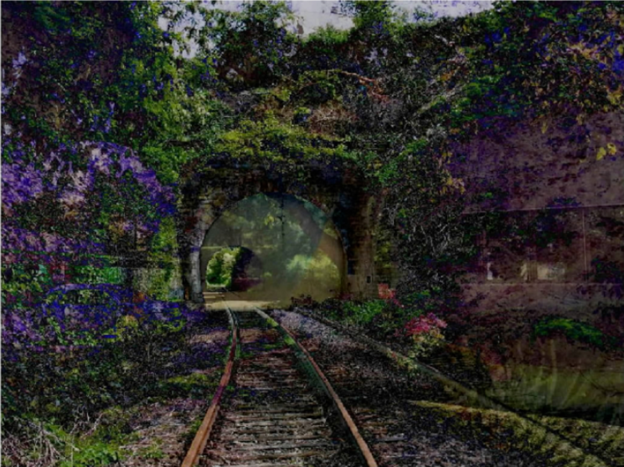The US District Court for the District of Columbia agreed with the US Copyright Office’s denial of a copyright application that sought to register visual art generated by artificial intelligence (AI) because US copyright law only protects works of human creation. Thaler v. Perlmutter, Case No. CV 22-1564 (D.D.C. Aug. 18, 2023) (Howell, J.)
The Copyright Act of 1976 provides immediate copyright protection to any work of authorship fixed in any tangible medium of expression. Applicants may submit their works to the Copyright Office for registration, during which works are reviewed for eligibility for copyright protection. the Copyright Office then registers eligible works, affording the registration owner certain legal benefits and presumptions.
Stephen Thaler, the owner of an AI computer system called the “Creativity Machine,” claimed that his AI independently generated the below visual art entitled “A Recent Entrance to Paradise.”

Thaler sought to register the work with the Copyright Office. The copyright application described the art as “autonomously created by a computer algorithm running on a machine,” identified the Creativity Machine as the author and listed Thaler as the copyright claimant under the work-for-hire doctrine. The Copyright Office denied Thaler’s application because the work lacked human authorship, which is an essential element of a valid US copyright. Thaler twice requested reconsideration of the copyright application, and the Copyright Office twice refused to register the work because of the human authorship requirement. Thaler timely appealed the Copyright Office’s denial to the District Court for the District of Columbia, and both parties moved for summary judgment.
Under the authority of the Administrative Procedure Act, the district court reviewed the Copyright Office’s final agency action through the arbitrary and capricious standard of review (5 U.S.C. § 704). The district court first analyzed whether the AI computer system could own the copyright, then determined whether Thaler was a proper claimant under the work-for-hire doctrine. The district court held that the Copyright Office did not err in denying Thaler’s copyright registration application because US copyright law only protects works of human—not machine—creation. Although copyright law was designed to adapt with the times, the district court stated that there is an underlying and consistent understanding that human creativity is the driving force of copyrightability. While the tools humans use to create copyrightable works (fixed in tangible mediums) are ever evolving and range from pencils to computers, human authorship is a bedrock requirement to copyrightability such that the tools themselves cannot be listed as copyright authors. The district court further held that the plain text of the 1976 Copyright Act requires human authorship since it states that the originator of the copyrightable work must have the capacity for intellectual, creative or artistic labor—a standard that AI has yet to meet. Because AI computers cannot be copyright authors, the district court did not address the work-for-hire [...]
Continue Reading
read more

 Subscribe
Subscribe


